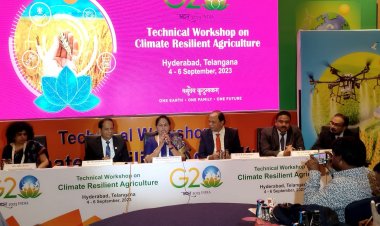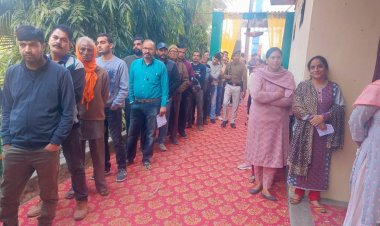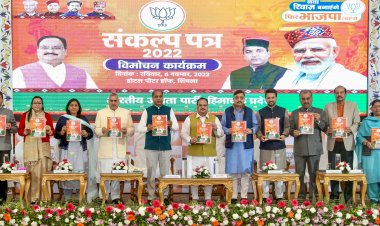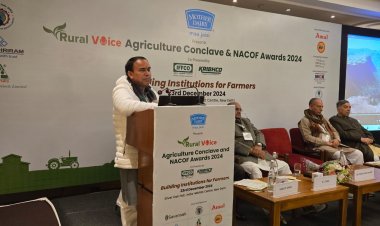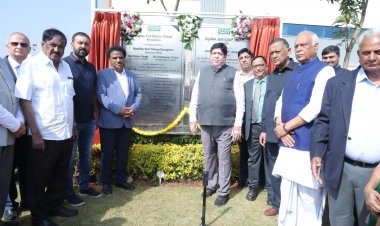Amid climate change, agroforestry emerges as a sustainable solution for food and nutritional security
In addition to increasing agricultural output, agroforestry contributes significantly to food and nutritional security by improving soil health. The system naturally enhances nutrient cycling through litter decomposition, root exudation, and biological nitrogen fixation. By supporting crop growth even in times of drought, agroforestry helps stabilize food production, making it a reliable source of nutrition for communities.
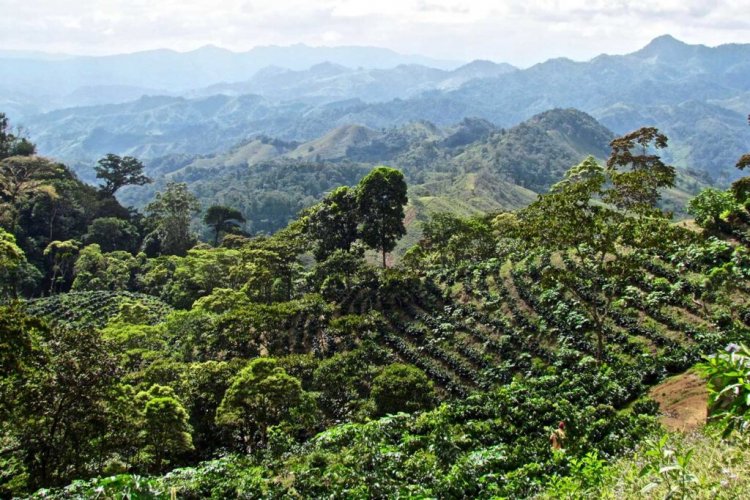
As the world faces increasing pressures to feed a rapidly growing population, innovative and sustainable agricultural practices like agroforestry are emerging as key solutions. According to the Centre for International Forestry Research (CIFOR) and World Agroforestry (ICRAF), agroforestry - “agriculture with trees” - integrates trees, shrubs, and livestock into farmland, boosting productivity and ecological health. This approach is especially relevant in India's Northeast, where complex landscapes and diverse ecosystems require resilient agricultural methods.
Agroforestry and Nutritional Security
In addition to increasing agricultural output, agroforestry contributes significantly to food and nutritional security by improving soil health. The system naturally enhances nutrient cycling through litter decomposition, root exudation, and biological nitrogen fixation. By supporting crop growth even in times of drought, agroforestry helps stabilize food production, making it a reliable source of nutrition for communities. Integrating tree species with crops also diversifies diets and boosts nutritional value compared to monoculture practices.
Environmental and Economic Benefits
Agroforestry brings ecological advantages to regions with challenging landscapes, like Northeast India. It regulates ecosystem services, stabilizing crop microclimates by retaining soil moisture and reducing erosion - a vital benefit for the hilly terrains prone to heavy rainfall and floods. Moreover, agroforestry systems reportedly store up to 30% more carbon than traditional agricultural systems, making them crucial in combating climate change.
Economically, agroforestry provides a diversified income stream for smallholder farmers, who constitute about 80% of the agricultural workforce in Northeast India. By cultivating a mix of fruits, vegetables, timber, and fodder, farmers reduce their dependency on single-crop incomes, mitigating financial risks from crop failures. Agroforestry also addresses the energy needs of these communities, supplying sustainable fuelwood, which is especially valuable in remote areas reliant on wood for cooking.
Challenges to Implementation
Despite its advantages, agroforestry remains underutilized in the Northeast due to various challenges. A lack of awareness about its benefits, coupled with high initial costs and regional land tenure issues, limits adoption. Additionally, climate-induced socio-economic challenges are exacerbating food insecurity for vulnerable communities. While government programs like the National Agroforestry Policy and National Mission for Sustainable Agriculture encourage sustainable practices, tailored strategies and support systems are essential to make agroforestry accessible.
The Balipara Foundation’s Role
The Balipara Foundation, working across Northeast India, has been pivotal in promoting agroforestry as part of its broader mission to balance ecological preservation with socio-economic growth. Through initiatives like community-based agroforestry programs, the Foundation supports reforestation, biodiversity, and food security. Their projects emphasize capacity building, where local farmers receive training in sustainable agroforestry practices. By helping smallholders access resources and knowledge, the Balipara Foundation aims to build resilient farming communities capable of sustaining themselves ecologically and economically.
In collaboration with local governments and international organizations, the Foundation advocates for a structured implementation of agroforestry across the region, addressing both environmental and socio-economic issues. As Northeast India grapples with the impacts of climate change and food insecurity, the efforts of the Balipara Foundation and similar organizations highlight the transformative potential of agroforestry.
A Path Forward
As global temperatures rise and food systems face unprecedented challenges, agroforestry presents a powerful pathway toward resilience. For the communities of Northeast India, it offers a model that not only secures their livelihoods but also sustains the diverse ecosystems they inhabit. With strategic investments and collaborative action from government bodies, NGOs, and community leaders, agroforestry can be a cornerstone of sustainable development, ensuring food security for generations to come.
(The author is a social entrepreneur and Chairman of the Balipara Foundation. Balipara Foundation works closely with Eastern Himalayan communities in the areas of environmental conservation, agriculture and livelihoods.)



 Join the RuralVoice whatsapp group
Join the RuralVoice whatsapp group































